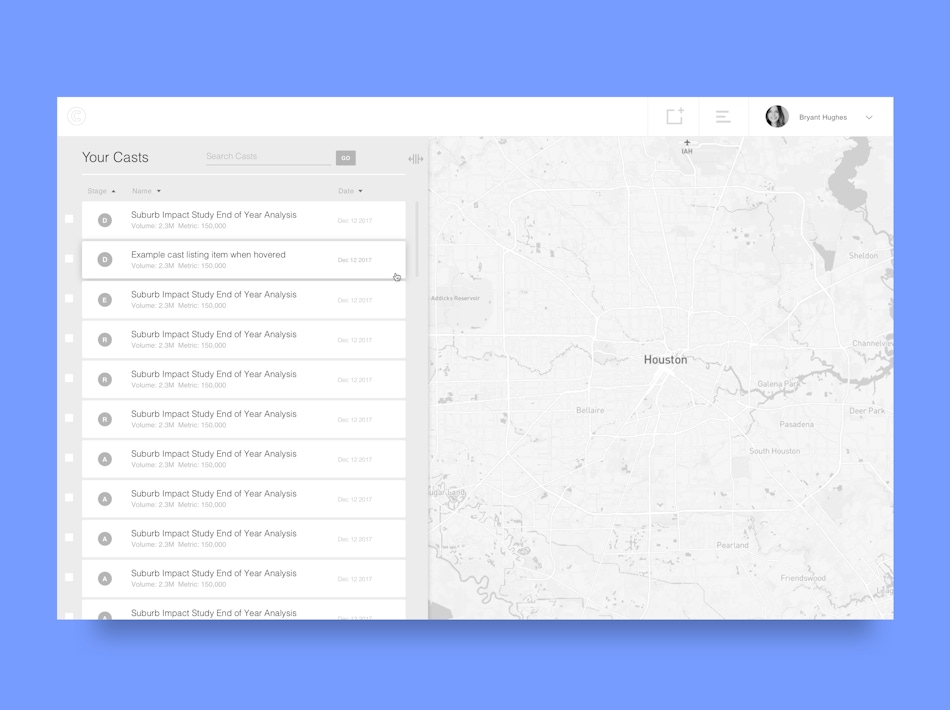
In this article we'll share a few product development tips we always find ourselves coming back to when helping PropTech founders build their product roadmap.

In this article we'll share a few product development tips we always find ourselves coming back to when helping PropTech founders build their product roadmap.
Over the years, we’ve worked with a number of founders looking to launch digital products in the PropTech space. In some cases the founders come from a deep business background, but with little to no design and technology expertise.
In those cases, we usually start our conversations by dispelling some common misconceptions and helping them put together a framework for their product development roadmap.
In this article we'll share a few product development tips we always find ourselves coming back to when helping PropTech founders build their product roadmap.
This one comes from personal experience. As designers and developers, we’ve worked on countless “equity projects” that unfortunately don’t amount to much. 95% of the time, these shortcomings have come from the product not defining its business model early, and focusing too much on scaling the product rather than the business model.
You want to prove interest in your idea, show people are willing to pay for it, and then figure out how to build it. Don’t show up to your pitch with a bunch of bells and whistles but no traction!
The world is filled with products marketed at too large an audience. As the adage goes, if you try and help everyone, you end up helping no one. The same goes for your product. As many investors will tell you, find a small group of people with a single specific problem, and fix it.
If in doubt, lean into niching yourself too much. It’s easier to open up your value to a wider audience than it is to overhaul your product to solve a more nuanced problem.
There are even entire movements out there surrounding niche micro-SASS products, aimed at staying lean and becoming profitable early.
People have strong opinions on wireframes and prototypes. “Design in your code,” they all say.
In theory this is great, but in practice it can become a cluster of code that quickly becomes unusable after multiple iterations and changes.
For us, we love spending a lot of time in wireframes, where we can plan and prototype the product itself.

If you’re unfamiliar, wireframes and low fidelity designs are similar to storyboards or sketches. They allow you to plan the strictest of your design before applying stylistic elements like colors, typography, and visuals.
Rather than jumping into code, spend time creating thoughtful wireframes, and use these as your prototypes.
Also, nowadays most design tools like Sketch and Figma have prototyping features built in, allowing you to make your wireframes interactive, and letting you build an actual usable prototype.
Another easy mistake is thinking that you need to build your product in the most scalable and long-term way from the get go. This is not the case.
When building your MVP, or even early iterations of your production-ready product, use tools that allow you to get to market and iterate quickly.
When your product is ready to scale, we’ll use frameworks like Laravel or Ruby on Rails, to create the fully-custom platform, but before that, using Content Management Systems like Craft provide substantial amounts of functionality for a very low cost.

With Craft, for example, you get a fully featured CMS allowing you to create sophisticated data models that can easily power a custom product. It also comes with user accounts, authentication, e-commerce, and is easily extendable.
Before you jump head first into a fully custom platform, make sure you’ve evaluated all your options, especially the ones that let you move faster with substantially less cost and overhead.
With all that being said, let me hedge a bit and say that every business and product is different. There’s no one size fit all solution for everyone, and your idea could very well break some of these conventions I’m describing above!
If you have any questions or want to hear more tips about building your product development roadmap, don’t hesitate to reach out to me at bryant[at]authenticff.com
Subscribe here to get our short and sweet monthly newsletter!